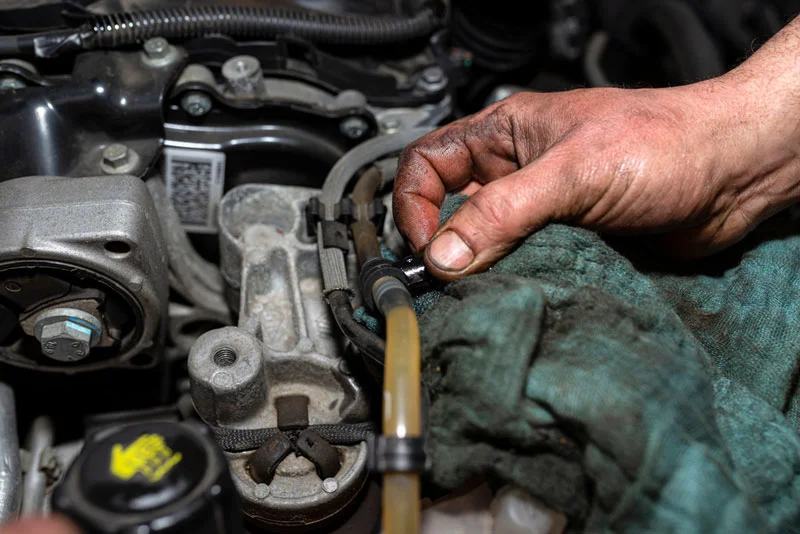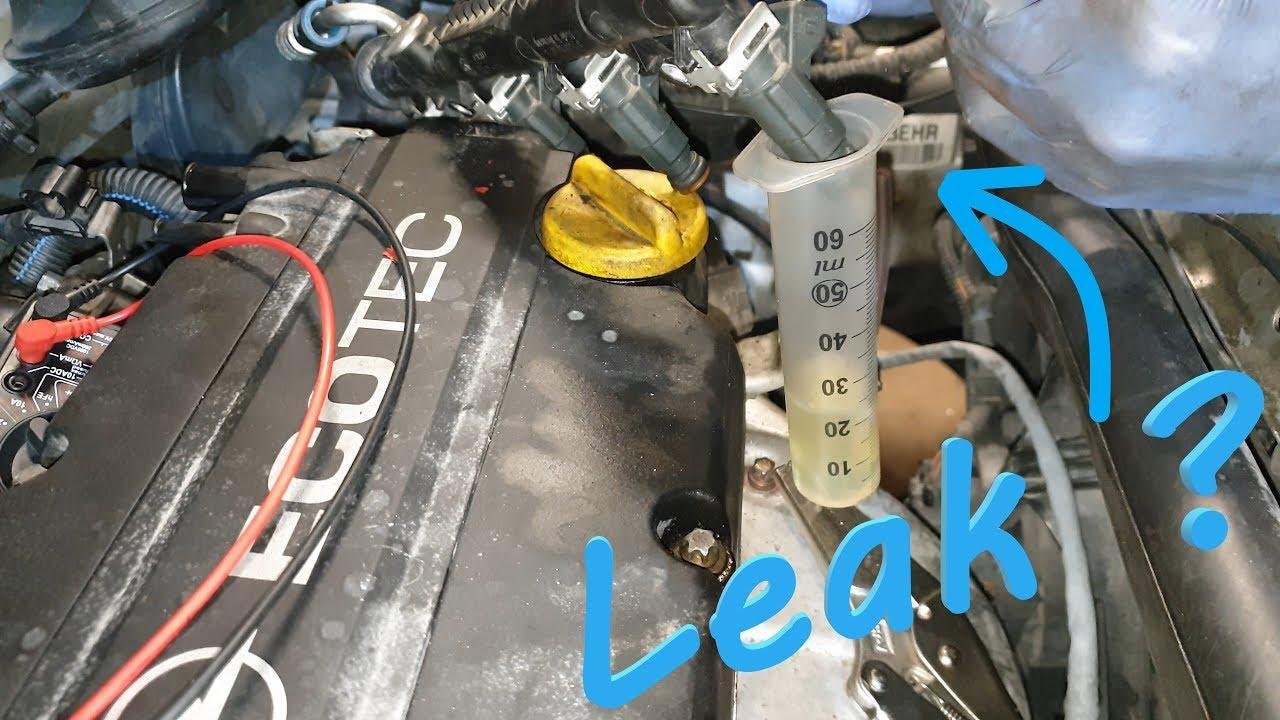
Air trapped in the diesel fuel system can lead to a variety of engine problems. If the air is not completely purged, the diesel engine may run for a short period before the exhaust sound changes, intermittent white smoke appears from the exhaust pipe, engine speed drops, power weakens, and in severe cases, the engine may stall.
Understanding the root causes and learning how to properly bleed the system is critical for ensuring smooth engine performance. In this article, we explain the common sources of air in the fuel lines, how to identify the issue, and step-by-step methods to eliminate it.
Common Causes of Air in Diesel Fuel Lines
1. Air Entering the Low-Pressure Fuel System
The low-pressure side of the fuel system can draw in air due to:
-
Fuel starvation or blocked tank breather: If diesel fuel runs out or the breather hole in the fuel cap is blocked, a vacuum forms inside the tank, allowing air to be sucked in.
-
Damaged hand primer seals: Cracked or uneven sealing washers between the hand primer and the pump body can let air in.
-
Worn primer piston or leather cup: Severe wear in the hand primer’s piston or leather cup creates gaps, allowing air to enter from the top.
-
Leaking pipe joints: Damaged or misaligned gaskets or loose hollow bolts at pipe joints allow air into the system.
-
Cracked fuel lines: A break in the low-pressure fuel pipe will also introduce air. To test this, remove the line, clean the joint, block one end with your finger, and suck from the other. If your tongue can’t seal it due to continued suction, the pipe is likely cracked.
-
Faulty return valve: If contaminants prevent the return valve from sealing properly, fuel pressure in the injection pump may drop, reducing fuel volume and introducing persistent air.

2. Backflow of High-Pressure Air from the Injector Nozzles
In rare but critical cases, high-pressure air may flow backward into the fuel supply system due to:
-
Stuck injector needle valve: If the needle valve remains open, and the delivery valve seal is damaged or worn, air from the cylinder can flow back through the nozzle into the fuel system.
-
Worn guide section of the injector: Serious wear in the needle valve guide or a broken injector spring allows cylinder air to pass through the nozzle’s internal passages into the return lines.
-
Damaged injector body: In engines like the 4115 diesel, air can travel through the injector body, high-pressure line, and delivery valve seat into the injection pump cover and back through the return valve to the fuel pump.

How to Bleed Air from the Diesel Fuel System
The fuel delivery system is typically divided into segments:
Fuel tank → Fuel-water separator → Feed pump → Fuel filter → Injection pump
Follow these steps to bleed air from each section:
Step-by-Step Fuel System Bleeding Procedure
-
Fuel-Water Separator
-
Loosen the outlet pipe fitting.
-
Pump the hand primer until diesel flows without air bubbles.
-
Tighten the fitting.
-
-
Feed Pump Inlet
-
Loosen the inlet fitting of the feed pump.
-
Continue pumping the hand primer until the fuel is bubble-free.
-
Tighten the fitting.
-
-
Feed Pump Outlet
-
Loosen the outlet fitting on the feed pump.
-
Pump until only clear diesel flows.
-
Tighten the fitting.
Tip: Sometimes the hand primer feels ineffective. This may be because the feed pump diaphragm is at the top of its stroke. Simply turn the engine over one revolution to reposition it.
-
-
Fuel Filter Outlet
-
Loosen the outlet or bleeding screw on the fine fuel filter.
-
Pump the hand primer until no air bubbles are seen.
-
Tighten the screw.
This may take longer due to the large size of the filter.
-
-
Injection Pump Bleeding
-
Loosen the bleeding screw (return port) on the injection pump.
-
Pump until the fuel flows without bubbles, then tighten the screw.
-
Continue pumping until you hear a “squeaking” sound from the return valve, indicating proper fuel flow.
-
At this point, most of the air in the low-pressure system should be eliminated. You’ll also notice the hand primer becomes very firm, requiring more force to press. After a few more pumps, you can attempt to start the engine.

How to Check for Injector Air Leaks
To determine if air is leaking through the injectors:
-
Disconnect the injector return line from the fuel filter and leave it open to the atmosphere.
-
Plug the return port on the fuel filter.
-
Bleed all air and restart the engine.
If no more air appears in the pump, the problem lies with one or more injectors. To identify the faulty injector:
-
Disconnect each injector’s return line individually.
-
Observe for air bubbles.
-
The injector showing continuous bubbling is the culprit and should be serviced or replaced.

Additional Tips for Preventing Air Intrusion
-
After filter changes or water separator cleaning, always perform air bleeding.
-
Tighten all fittings: Loose clamps, worn rubber hoses, and improperly seated seals are frequent sources of air leaks.
-
Regular maintenance: Clean fuel filters and check gaskets and primer components routinely.
Advanced Diagnosis with Transparent Lines (Optional Tip)
For recurring air issues, consider installing transparent fuel lines temporarily. These allow you to visually confirm the presence and movement of air bubbles during operation, making diagnosis faster and more accurate.

Final Thoughts
Air in diesel fuel lines is a common yet preventable issue. With a good understanding of the system and proper maintenance routines, you can minimize downtime, avoid engine misfires, and keep your diesel engine running efficiently.
For professional diesel engine parts or complete fuel system kits, feel free to contact us or explore our engine solutions.
